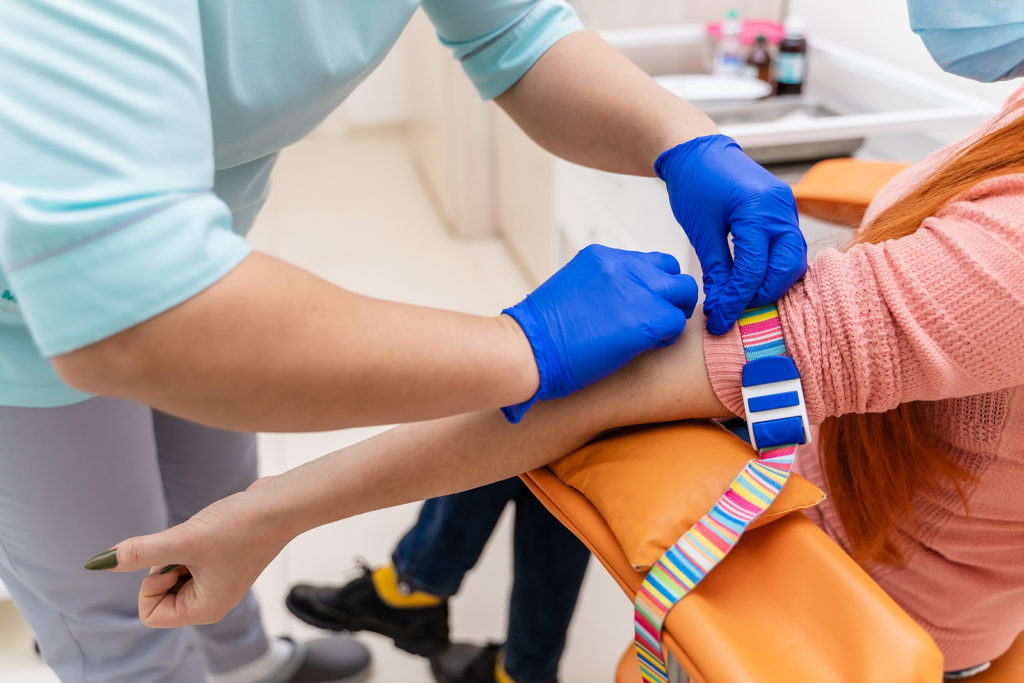Not known Details About Northeast Medical Institute - New Haven Campus Phlebotomy Course & Cna Class
Wiki Article
Fascination About Northeast Medical Institute - New Haven Campus Phlebotomy Course & Cna Class
Table of ContentsOur Northeast Medical Institute - New Haven Campus Phlebotomy Course & Cna Class Diaries6 Simple Techniques For Northeast Medical Institute - New Haven Campus Phlebotomy Course & Cna ClassThe smart Trick of Northeast Medical Institute - New Haven Campus Phlebotomy Course & Cna Class That Nobody is Talking AboutNortheast Medical Institute - New Haven Campus Phlebotomy Course & Cna Class for BeginnersAll About Northeast Medical Institute - New Haven Campus Phlebotomy Course & Cna ClassThe Ultimate Guide To Northeast Medical Institute - New Haven Campus Phlebotomy Course & Cna Class
Nonetheless, using such tools ought to be accompanied by various other infection avoidance and control techniques, and training in their use. Not all safety gadgets are relevant to phlebotomy. Prior to choosing a safety-engineered tool, individuals ought to thoroughly investigate available tools to identify their ideal use, compatibility with existing phlebotomy methods, and efficacy in shielding team and patients (12, 33).For setups with low resources, price is a driving consider purchase of safety-engineered gadgets - PCT Courses. Where safety-engineered devices are not offered, experienced usage of a needle and syringe serves. Unexpected exposure and certain info concerning an event should be tape-recorded in a register. Support services should be advertised for those that undertake unintentional exposure.
In the blood-sampling space for an outpatient department or facility, give a comfy reclining sofa with an arm remainder.
Northeast Medical Institute - New Haven Campus Phlebotomy Course & Cna Class Can Be Fun For Everyone
Guarantee that the indications for blood sampling are clearly specified, either in a created procedure or in documented guidelines (e.g. in a laboratory kind). In all times, follow the methods for infection avoidance and control listed in Table 2.2. Infection avoidance and control techniques. Collect all the devices needed for the treatment and location it within risk-free and easy reach on a tray or trolley, ensuring that all the products are plainly noticeable.Present yourself to the client, and ask the individual to mention their complete name. Examine that the laboratory type matches the client's identification (i.e. match the client's information with the lab kind, to guarantee exact identification).
Make the person comfy in a supine setting (if possible). Location a clean paper or towel under the individual's arm. Review the test to be executed (see Annex F) and get verbal authorization. The patient has a right to reject an examination at any time prior to the blood tasting, so it is essential to guarantee that the client has recognized the procedure.
The Definitive Guide to Northeast Medical Institute - New Haven Campus Phlebotomy Course & Cna Class
Extend the client's arm and evaluate the antecubital fossa pop over here or forearm. Locate a blood vessel of a great dimension that is noticeable, straight and clear.DO NOT put the needle where capillaries are drawing away, because this boosts the possibility of a haematoma. Locating the capillary will certainly assist in establishing the proper dimension of needle.
Haemolysis, contamination and visibility of intravenous liquid and medicine can all change the results (39. Nursing team and physicians may access central venous lines for specimens adhering to procedures. Nonetheless, specimens from central lines carry a risk of contamination or erroneous research laboratory examination results (https://linktr.ee/northeastmed). It is appropriate, but not excellent, to attract blood specimens when first introducing an in-dwelling venous tool, before attaching the cannula to the intravenous fluids.
Fascination About Northeast Medical Institute - New Haven Campus Phlebotomy Course & Cna Class
Failure to allow sufficient get in touch with time boosts the risk of contamination. DO NOT touch the cleansed website; in specific, DO NOT position a finger over the capillary to direct the shaft of the subjected needle.Ask the client to develop a clenched fist so the capillaries are much more prominent. Enter the vein swiftly at a 30 degree angle or less, and remain to present the needle along the capillary at the easiest angle of entrance - Phlebotomy Training. When sufficient blood has actually been collected, release the tourniquet BEFORE withdrawing the needle
The smart Trick of Northeast Medical Institute - New Haven Campus Phlebotomy Course & Cna Class That Nobody is Talking About
Withdraw the needle carefully and apply gentle stress to the site with a tidy gauze or dry cotton-wool sphere. Ask the client to hold the gauze or cotton wool in position, with the arm expanded and increased. Ask the client NOT to bend the arm, since doing so triggers a haematoma.
Northeast Medical Institute - New Haven Campus Phlebotomy Course & Cna Class Things To Know Before You Get This
Where possible, keep the tubes in a rack and relocate the shelf towards you - https://northeastmed.wordpress.com/2024/06/29/northeast-medical-institute-new-haven-campus-phlebotomy-course-cna-class/. If the example tube does not have a rubber stopper, inject exceptionally gradually into the tube as decreasing the stress and velocity made use of to move the specimen decreases the risk of haemolysis.
Report this wiki page